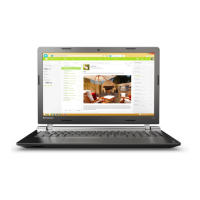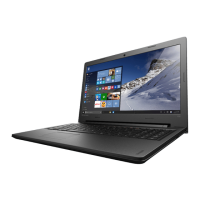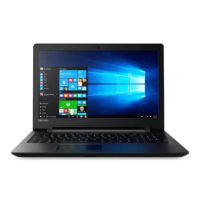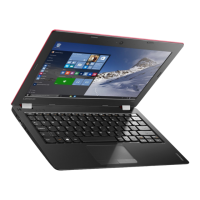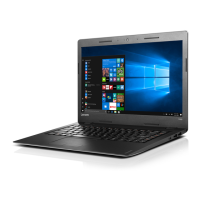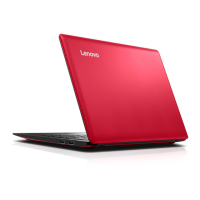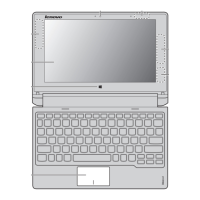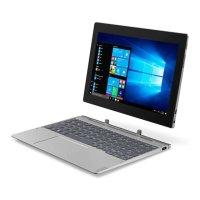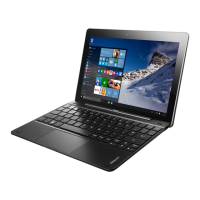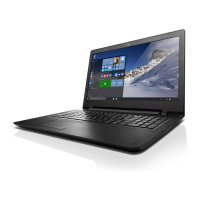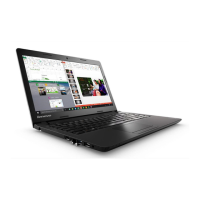
Do you have a question about the Lenovo ideapad 100-14IBY and is the answer not in the manual?
| Form factor | Clamshell |
|---|---|
| Product type | Laptop |
| Product color | Black |
| Housing material | Acrylonitrile butadiene styrene (ABS) |
| Market positioning | Business |
| Stepping | D1 |
| Tjunction | 90 °C |
| Processor cache | 2 MB |
| Processor cores | 2 |
| System bus rate | 5 GT/s |
| Processor family | Intel® Celeron® |
| Processor series | Intel Celeron N3000 series |
| Processor socket | BGA 1170 |
| Processor codename | Braswell |
| Processor frequency | 1.6 GHz |
| Processor cache type | L2 |
| Processor lithography | 14 nm |
| Processor manufacturer | Intel |
| PCI Express slots version | 2.0 |
| Processor boost frequency | 2.48 GHz |
| Processor operating modes | 64-bit |
| ECC supported by processor | No |
| PCI Express configurations | 1x2+2x1, 1x4, 2x2, 4x1 |
| Thermal Design Power (TDP) | 6 W |
| Scenario Design Power (SDP) | 4 W |
| Maximum number of PCI Express lanes | 4 |
| Motherboard chipset | Intel SoC |
| Internal memory | 4 GB |
| Memory clock speed | 1600 MHz |
| Memory form factor | On-board |
| Internal memory type | DDR3L-SDRAM |
| Memory layout (slots x size) | 1 x 4 GB |
| HDD size | 2.5 \ |
| HDD speed | 5400 RPM |
| HDD interface | SATA III |
| Storage media | HDD |
| Card reader integrated | Yes |
| Total storage capacity | 500 GB |
| Compatible memory cards | MMC, SD, SDHC, SDXC |
| Number of HDDs installed | 1 |
| Panel type | TN |
| Display surface | Gloss |
| Display diagonal | 14 \ |
| Display brightness | 200 cd/m² |
| Display resolution | 1366 x 768 pixels |
| Native aspect ratio | 16:9 |
| Maximum resolution | 1920 x 1080 pixels |
| Number of execution units | 12 |
| Discrete graphics card model | Not available |
| On-board graphics card model | Intel® HD Graphics 400 |
| On-board graphics card family | Intel® HD Graphics |
| Maximum on-board graphics card memory | 8 GB |
| On-board graphics card base frequency | 320 MHz |
| On-board graphics card DirectX version | 12.0 |
| On-board graphics card burst frequency | 600 MHz |
| Wi-Fi standards | 802.11a, Wi-Fi 5 (802.11ac), 802.11b, 802.11g, Wi-Fi 4 (802.11n) |
| Bluetooth version | 4.0 |
| Top Wi-Fi standard | Wi-Fi 5 (802.11ac) |
| Ethernet LAN data rates | 10, 100 Mbit/s |
| Charging port type | DC-in jack |
| USB 2.0 ports quantity | USB 2.0 ports have a data transmission speed of 480 Mbps, and are backwards compatible with USB 1.1 ports. You can connect all kinds of peripheral devices to them. |
| VGA (D-Sub) ports quantity | 0 |
| Front camera resolution (numeric) | 0.3 MP |
| Audio system | Dolby Audio |
| Speaker power | 1.5 W |
| Pointing device | Touchpad |
| Password protection type | HDD, Power on, Supervisor |
| AC adapter power | 45 W |
| AC adapter frequency | 50 - 60 Hz |
| AC adapter input voltage | 100 - 240 V |
| Battery capacity | 24 Wh |
| Battery life (max) | 3 h |
| Number of battery cells | 3 |
| Sustainability certificates | RoHS |
| Processor code | SR2KN |
| Processor ARK ID | 91832 |
| Processor package size | 25 x 27 mm |
| Intel Identity Protection Technology version | 1.00 |
| Intel Small Business Advantage (SBA) version | 0.00 |
| Depth | 245 mm |
|---|---|
| Width | 340 mm |
| Height | 22.9 mm |
| Weight | 2000 g |
Overview of the computer's top components and layout.
Details on keyboard layout, numeric keypad, function keys, and hotkeys.
Identifies ports and features on the left side of the laptop.
Instructions for establishing a wired network connection.
Guidance on connecting and using USB devices with the computer.
Identifies ports and features on the right side of the laptop.
Identifies status indicators and memory card slot on the front.
How to insert and remove various types of memory cards.
Identifies ventilation slots and other features on the bottom.
Steps for initial setup and configuration of the Windows OS.
Explanation of Windows 8.1 Start screen and desktop environments.
Overview of Windows 8.1 charms for navigation and tasks.
Procedures for putting the computer into sleep mode or shutting it down.
Steps to enable and connect the computer to a wireless network.
How to access Windows 8.1 help and support resources.
Instructions on how to create a system image backup.
Procedures to restore the system from a backup or to factory status.
Common questions and answers regarding computer usage and issues.
Information and procedures related to the BIOS setup utility.
Solutions for display issues and BIOS/user password problems.
Solutions for computer sleep mode problems and display panel issues.
Solutions for sound, battery, hard disk, and recovery system problems.
Solutions for computer response, boot device, and external device problems.
Step-by-step guide on how to remove the computer keyboard.
Instructions for safely removing the optical drive from the laptop.

